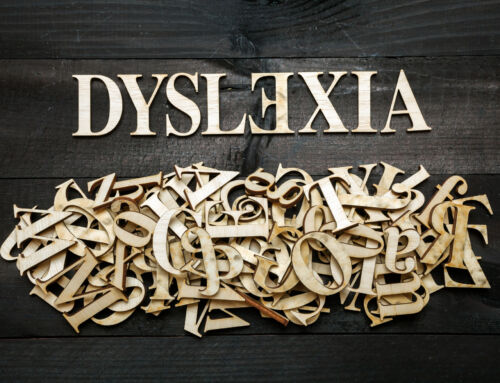How to support a child with anxiety due to dyslexia
The link between dyslexia and anxiety
Dyslexia affects a person’s reading, writing, and spelling, a significant portion of a child’s education. In school, children with dyslexia will encounter these difficulties every day – frequently in front of peers and instructors – and this can wear on their mental health. Because children with dyslexia are constantly placed into situations where they are likely to struggle with reading and writing, they are often affected by persistent anxiety.
Anxiety is the uncomfortable sensation of nervousness and unease that stems from situations where a person perceives a lack of control. The anxiety from dyslexia could manifest because the student feels inadequate, unintelligent, or embarrassed due to their past academic experiences. They may blame themselves for the difficulties dyslexia creates.
Alongside anxiety being a frustrating and draining thing to experience, it also leads to long-term mental health effects or harmful behaviors. Lower self-esteem can develop after repeated failures or embarrassment. Avoidant behaviors or a lack of effort because of perceived failure in the future may also manifest.
How you can detect anxiety in your child
Anxiety shows itself in many ways, some of which you may not expect to be indicators of the condition. Avoidance, acting out, emotional distress, and physical illness suggest a child is dealing with anxiety.
Avoiding activities such as homework, school, and anything that involves reading or writing may become prevalent. They may even avoid other kids or activities with peers because of the potential embarrassment of struggling with reading.
Acting out is an often misinterpreted sign of distress in children. Because they may have difficulty communicating their frustrations, they throw tantrums or act out in class, especially when in a situation involving reading. Crankiness may also correlate with reading or writing activities. Rumination about potential future mistakes or a fear of making mistakes means excessive anxiety relating to academic performance. Physically, the child may experience stomach aches or headaches due to stress.
Children are likely to experience at least one of these symptoms at some point, possibly for many reasons, not just anxiety due to dyslexia. Try to stay aware of when these behaviors manifest. Do they show up when there is a potential for reading or spelling (not just school)? Have they mentioned feelings of helplessness or an “I can’t” attitude?
How can you help?
Consult a professional
You can use many tools to help your child, but the most effective one is getting a dyslexia professional involved. It’s essential to learn how your child’s dyslexia affects them and to do so, a professional will be the most capable of helping. A professional can teach you and your child how dyslexia impacts them and can help anticipate the challenges that may occur. After finding professional help, you can use the DE-STRESS model created by the International Dyslexia Association to continue to support your child. The DE-STRESS model is specially designed to address stress, anxiety, and dyslexia.
Communicate Calmly
Communication is incredibly beneficial when supporting your child during a difficult time. While they may be unable to explain precisely how they feel, having a calm and understanding conversation with them is a significant step in addressing problems. Avoiding frustration can be difficult when your child displays behaviors such as tantrums or avoidance, but try to remain patient and understanding. What they need is empathy, not anger. They might not understand what they are feeling, and that’s okay. Validate their feelings and stay calm – your child will take cues from you. Let them know that you understand how this is difficult for them and that you are here to help.
Learn Together
Once your child understands what triggers their anxiety, they can learn tools to help them calm themselves if anxious. To discover what events are triggering them, the worksheets you can find here will be helpful. By following these worksheets from top to bottom, you can learn more about your child’s anxiety and what calming techniques help them.
Alongside the calming techniques on the worksheet, they can use the 555 methods. Try to practice this with your child to give them an example.
555 technique:
- Breathe in for five seconds
- Hold your breath for five seconds
- Breathe out for five seconds
- Repeat three times
Talk with their instructor
You will likely find that the classroom triggers your child’s anxiety because of their dyslexia. Although you have given your child tools to self-regulate, it is also essential to communicate with their teacher. Incorporating anxiety-related accommodations such as having private presentations, reading only with the instructor, and being allowed to take breaks to calm anxiety may also be beneficial.
Conclusion
Trying to support your child when they are overwhelmed by anxiety can be incredibly difficult and stressful. If you find that your child with dyslexia also displays symptoms of anxiety, it is best to consult a professional in dyslexia or mental health.
Here at Read Academy, we specialize in learning for children with dyslexia and other special education needs. We understand that learning disabilities can be challenging for students to manage independently, and we are here to support them. Don’t hesitate to call for more information or schedule a tour to learn about enrollment.





